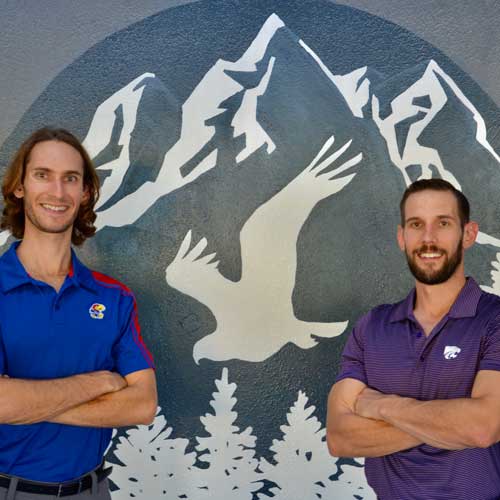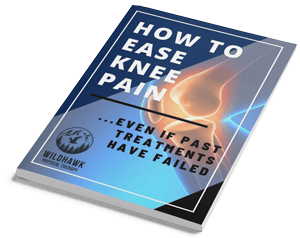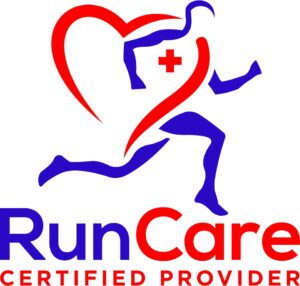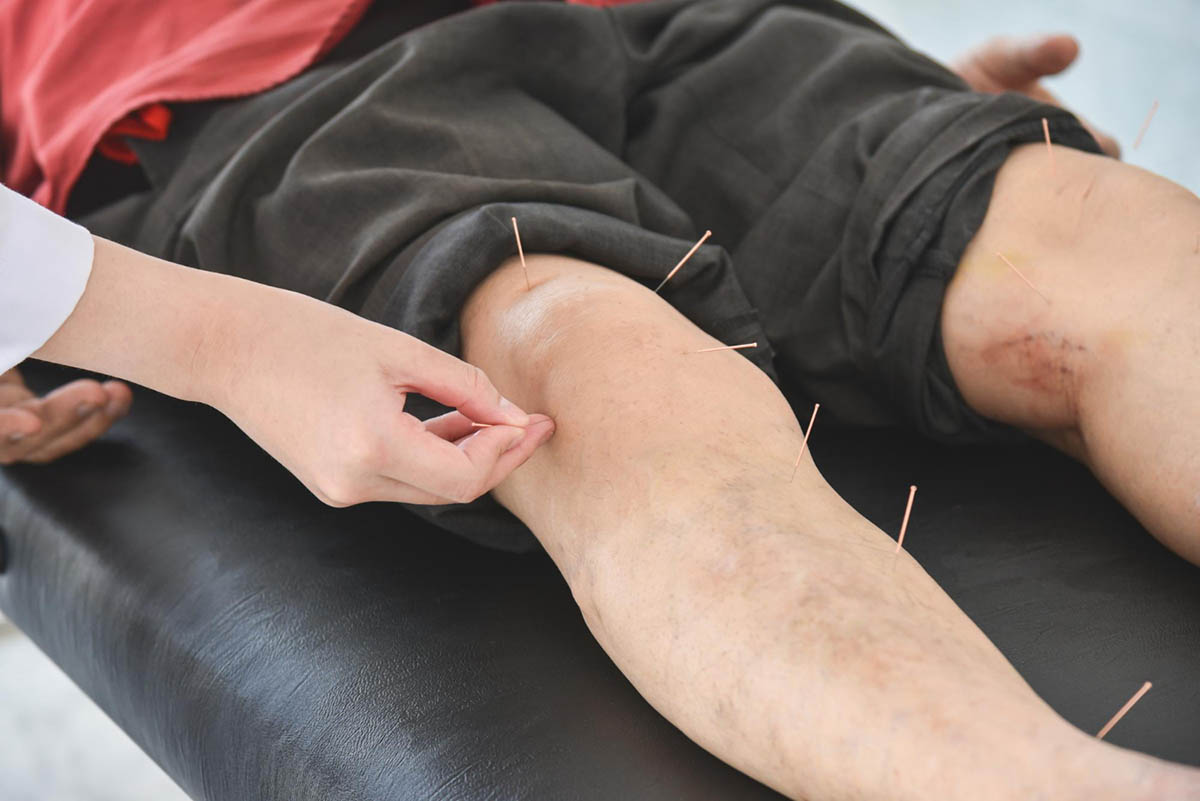
Knee pain can significantly disrupt daily life, limiting mobility and making even simple activities uncomfortable. For individuals in Asheville, NC, looking for effective solutions, WildHawk Physical Therapy offers dry needling as a targeted treatment for knee pain. This blog explores how dry needling works, its benefits, and how it integrates into comprehensive knee pain management plans.
What Is Dry Needling?
Dry needling is a therapeutic technique licensed physical therapists use to relieve musculoskeletal pain. It involves the insertion of thin, filiform needles into the skin and underlying tissues, targeting specific dry needling points for knee pain—knots or tight bands in the muscle that can cause pain or discomfort. While often compared to acupuncture, dry needling is rooted in Western medicine and focuses on addressing neuromuscular dysfunctions.
How Does Dry Needling Relieve Knee Pain?
Dry needling targets areas of muscle tightness or dysfunction around the knee. When the needles penetrate trigger points, they help release muscle tension, improve blood flow, and reduce inflammation. This process stimulates the body’s natural healing response, promoting recovery and alleviating pain. By addressing underlying muscle imbalances, dry needling enhances mobility and reduces the strain on the knee joint.
Common Knee Conditions Treated with Dry Needling
Dry needling is particularly effective for various knee conditions. Here are three common issues where this technique can provide relief:
Patellar Tendinitis (Jumper’sJumper’s Knee)
Patellar tendinitis occurs when the tendon connecting the kneecap to the shinbone becomes inflamed, often due to repetitive stress. Dry needling targets trigger points around the patellar tendon, reducing tension in surrounding muscles and alleviating pain.
Iliotibial Band Syndrome (ITBS)
ITBS is caused by irritation of the iliotibial band, a thick band of tissue running along the outside of the thigh. This condition often leads to pain on the outer side of the knee. Dry needling helps release tightness in the IT band and surrounding muscles, providing significant relief.
Osteoarthritis of the Knee
Osteoarthritis involves the gradual breakdown of cartilage in the knee joint, leading to pain and stiffness. While dry needling isn’t a cure, it can reduce muscle tension and improve joint function. Research indicates that one dry needling session can reduce pain intensity in individuals with mild to moderate knee osteoarthritis.
Dry Needling Techniques for Knee Pain
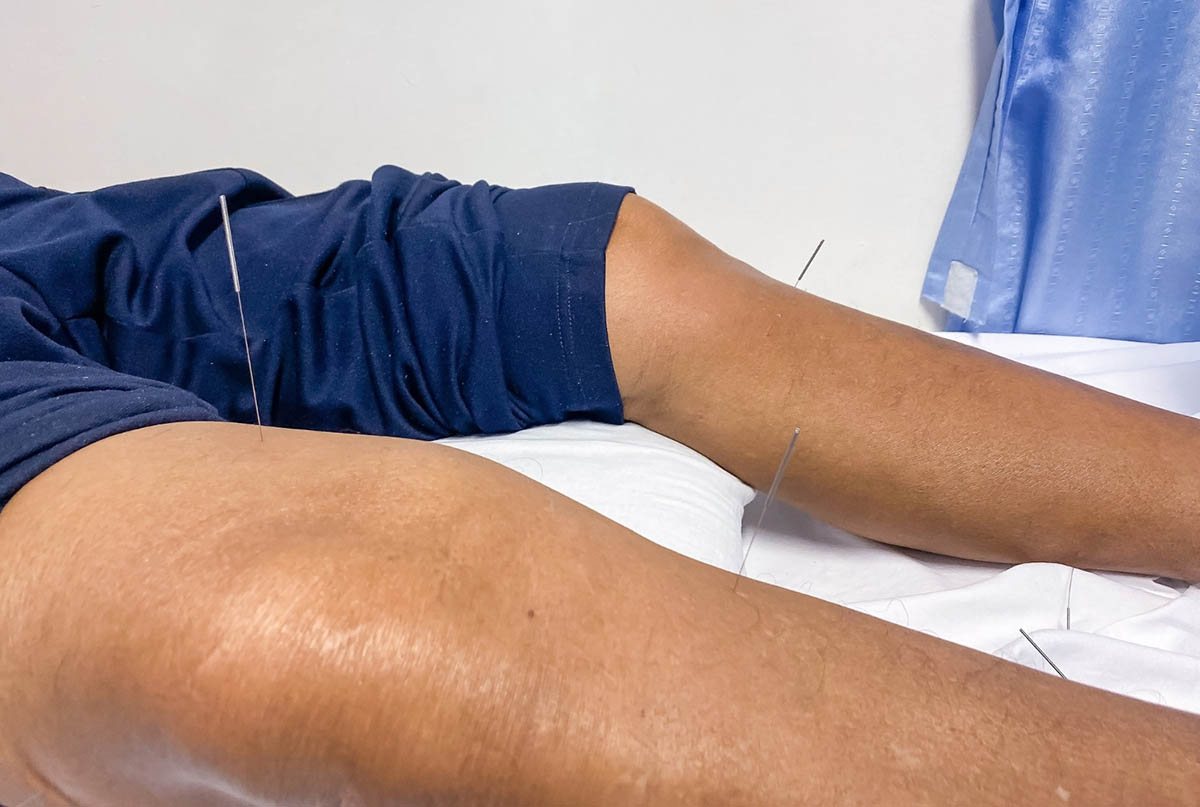
Physical therapists use various dry-needling techniques tailored to the individual’s condition and pain level.
Identifying Trigger Points Around the Knee
Trigger points are commonly found in quadriceps, hamstrings, or calf muscles. By targeting these areas, therapists can alleviate referred pain patterns contributing to knee discomfort.
Non-Trigger Point Dry Needling Approaches
In some cases, therapists may use dry needling techniques focusing on general areas of pain or tightness rather than specific trigger points. This approach aims to improve circulation and promote healing in the knee region.
Effectiveness and Benefits of Dry Needling for Knee Pain
Dry needling has gained recognition as a valuable treatment for knee pain. It offers relief by addressing muscle imbalances and trigger points. Understanding its effectiveness and the benefits it provides can help patients make informed decisions about incorporating this therapy into their recovery plans.
Research Findings and Clinical Evidence
Recent studies have shown promising results for dry needling in alleviating knee pain. For example, low to moderate evidence supports its effectiveness in reducing pain and disability in patellofemoral pain syndrome. Additionally, one dry needling session has improved pain intensity for individuals with mild to moderate osteoarthritis. However, its effects are less pronounced for post-surgical knee pain or advanced osteoarthritis.
Compared to traditional approaches like medication or bracing, dry needling offers a drug-free, minimally invasive alternative. When integrated into a broader physical therapy program, it can effectively address knee pain’s symptoms and underlying causes.
Safety and Considerations
Dry needling is considered a safe and minimally invasive technique by trained professionals. However, to minimize risks, one must be aware of potential side effects and ensure treatment is administered by a certified practitioner.
Potential Side Effects and Risks
Mild side effects such as soreness, bruising, or fatigue may occur after a session. Serious complications are rare but can include infection or injury if performed incorrectly.
Qualifications of Practitioners
It’s crucial to seek treatment from certified physical therapists with specialized training in dry needling. At WildHawk Physical Therapy, our professionals are fully qualified, ensuring the highest standard of care. When choosing a dry needling therapist, consider asking the following questions:
- Are they licensed and trained in dry needling?
- Do they have experience treating knee pain?
- What is their approach to integrating dry needling with other therapies?
Integrating Dry Needling into a Comprehensive Knee Pain Management Plan
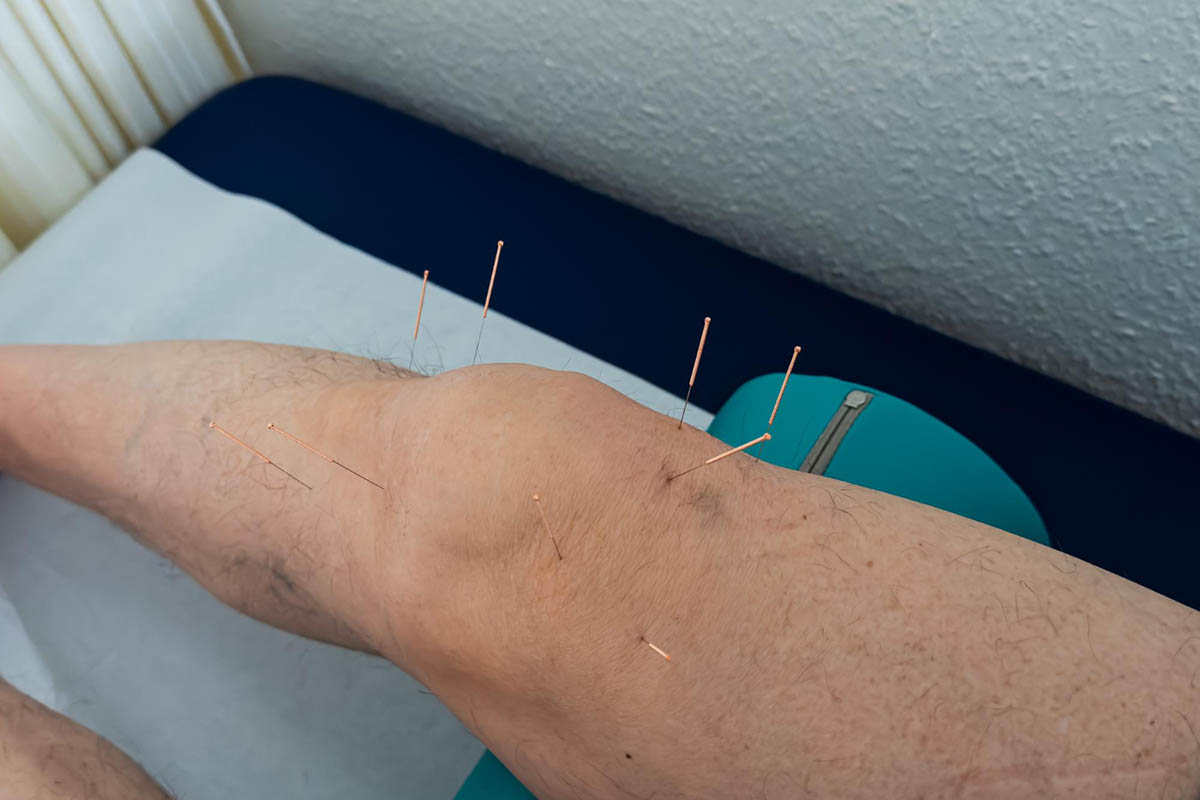
Dry needling is best used as part of a comprehensive approach that includes physical therapy and personalized care plans to achieve sustained relief from knee pain. Incorporating supportive lifestyle modifications, such as targeted exercises and proper joint care, further enhances its effectiveness.
Combining Dry Needling with Physical Therapy
Physical therapy exercises strengthen the muscles supporting the knee, improving stability and reducing strain. Patients often experience faster recovery and enhanced mobility when combined with dry needling.
At WildHawk Physical Therapy, our expert team integrates dry needling into personalized treatment plans, addressing your unique needs for optimal recovery. If you’re wondering, “Is dry needling good for knee pain?” or “What is dry needling for knee pain?” Contact us today to schedule a consultation and take the first step toward pain-free living.
Lifestyle Modifications and Self-Care
Activities like stretching, maintaining a healthy weight, and wearing supportive footwear can alleviate knee pain. Therapists may also recommend avoiding high-impact activities that exacerbate symptoms.
Conclusion
Dry needling is an effective and innovative therapy for individuals in Asheville, NC, seeking relief from knee pain. Whether you’re managing conditions like patellar tendinitis, iliotibial band syndrome, or osteoarthritis, this minimally invasive technique addresses underlying muscle dysfunction, alleviating pain and improving joint mobility. Patients can achieve long-lasting relief and enhanced quality of life by integrating dry needling into a comprehensive treatment plan that includes physical therapy and lifestyle modifications.
FAQs
Is dry needling scientifically proven?
Yes, research supports dry needling as an effective treatment for certain types of knee pain, including patellofemoral pain syndrome and mild osteoarthritis.
Does dry needling work on knee pain?
Dry needling can relieve knee pain by targeting muscle trigger points and reducing inflammation, making it particularly effective for conditions like patellar tendinitis and IT band syndrome.
How long do the effects of dry needling last?
The duration of relief varies by individual. Some patients experience immediate improvements, while others may require multiple sessions for lasting benefits. Depending on the condition and treatment plan, effects typically last several days to weeks.


